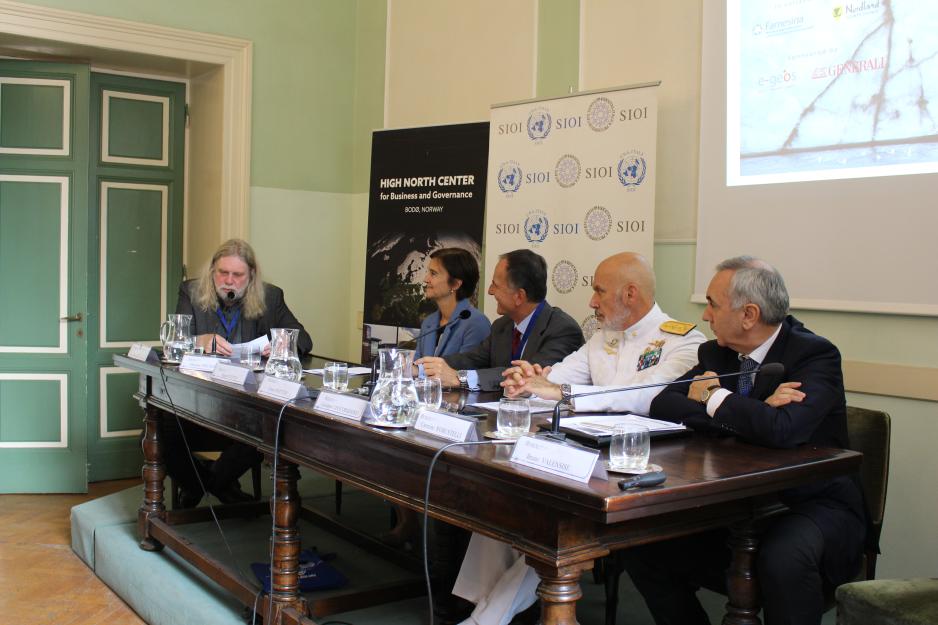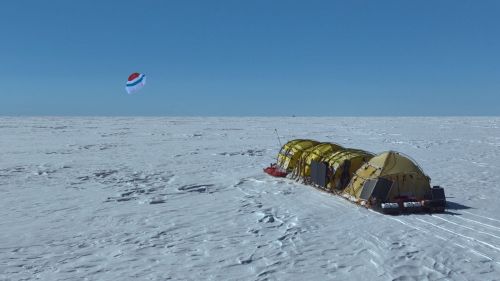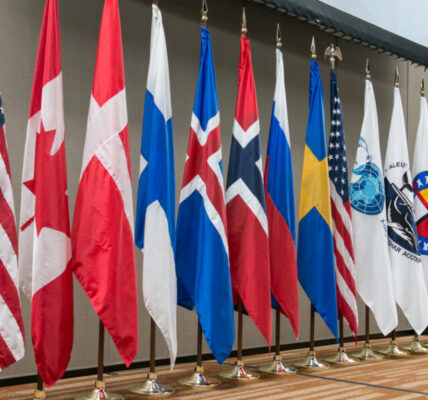Executive Summary:
- Moscow portrays itself as a constructive actor advocating for economic cooperation in the Arctic and Baltic seas while also conducting an increasing rate of hybrid attacks and engaging in provocative discourse.
- This double game of cooperation has long marked the Kremlin’s Arctic agenda, but recent months have seen an increase in this strategy of engagement and expanded Arctic militarization.
- Russia’s dual strategy of confrontation and cooperation in the Arctic seeks to exploit divisions among Western allies while portraying their actions as provocations, forcing Arctic states to navigate a delicate balance in their responses.
The Russian-hosted International Arctic Forum (IAF) held on March 26–27 painted a vision of Russia as a responsible and constructive Arctic player. The high-profile event included Russian President Vladimir Putin as a speaker and framed the Arctic as a region for cooperation between both Arctic and non-Arctic states. During his speech, Putin claimed that Russia has “advocated and continues to advocate for equal cooperation in the region” and that “unfortunately, international cooperation in the northern latitudes is currently going through difficult times” as “many Western countries have taken a confrontational course” (Forum Arctica, March 27). This image of Russia seeking cooperation in the region, however, is belied by an increasing military buildup in the Baltic and Arctic, as evidenced by exercises and provocative language (DIIS, February 14). While this two-pronged approach is not new, Russia has been intensifying its Arctic military operations in recent months, while continuing to maintain a rhetorical commitment to peace and cooperation in the region (see EDM, March 31). Responding to this approach is difficult as Western states must acknowledge that responding militarily to Russia’s Arctic strategy risks legitimizing Moscow’s narratives of Western aggression and expansion into the Arctic, which in turn could fuel Russian disinformation that is meant to weaken alliances across the other Arctic states (Topwar.ru, April 3).

During his speech at the IAF, Putin announced that “the number of [Russian] military personnel [in the region] will be increased” in accordance with the annual federal budget, to strengthen Russia’s military presence in the Arctic (see EDM, October 3, 2024; President of Russia, March 27). This buildup is part of a pattern of expanded Russian military presence in the Baltic Sea and Arctic region (High North News, August 20, 2024). Hybrid attacks are growing more prevalent since Russia’s 2022 full-scale invasion of Ukraine, including rising hybrid attacks on undersea cables (European Leadership Network, December 8, 2023; see EDM, February 5). While military exercises in the Barents Sea are not necessarily increasing in quantity, it is notable that exercises now include military personnel who have served in Ukraine (The Barents Observer, March 18). Russia is also upgrading its submarine capabilities, with Putin recently officiating a ceremony launching the multi-role Perm nuclear-powered submarine, part of the Project 885/885M Yasen class (see EDM, March 31). The Perm has a dual hunter-killer role as well as the ability to vertically launch cruise missiles (President of Russia, March 27; The Barents Observer, March 28). It is the first Project 885M submarine to carry Zircon hypersonic cruise missiles, which reportedly carry a 300-kilogram warhead originally designed to be an anti-ship missile but has been used against Ukrainian cities in Russia’s war against Ukraine (Kyiv Independent, March 30, 2024).
Russia’s military build-up is reinforced by the narrative that the United States is an aggressive actor in the Arctic and that Russia is merely responding to imperialist behavior. This is evident in Putin’s responses to U.S. President Donald Trump’s recent rhetoric regarding the purchase of Greenland (see EDM, January 21). During his speech at the IAF, Putin claimed that the United States’ plan to “annex” Greenland is part of plans to “systematically advance its geostrategic, military-political, and economic interests in the Arctic” (President of Russia, March 27). Beyond the headlines on Greenland, however, Russian officials have also accused other Arctic states such as Norway and Finland of seeking confrontation with Russia. For example, one official claimed recently that Norway is seeking to militarize Svalbard (Aftenposten, December 19, 2024; see EDM, March 20). Another recent example is Russian presidential aide Nikolai Patrushev’s accusation that the North Atlantic Treaty Organization’s (NATO) naval forces are seeking to block Russia from the Baltic Sea and conducting cyber operations on Russian ships in the region (Kyiv Independent, March 13).
In tandem with these accusations, Russia promotes itself as a cooperative actor in the Arctic. The vast majority of panels at the IAF described Russia as a central actor for future Arctic business investment, particularly emphasizing the Northern Sea Route (Forum Arctica, accessed April 3). The event also highlighted Russia’s efforts to protect the Arctic environment and its humanitarian cooperation with other states. Beyond the IAF, Russian officials have pushed a narrative of the necessity of U.S.-Russian economic cooperation and rapprochement in the Arctic (Arctic Today, February 27; The Barents Observer, March 12).
Russia has the opportunity to use the increasing division between the United States and its European Arctic allies on issues such as Greenland to create confusion over its intentions in the Arctic and Baltic regions (see EDM, January 21). This presents Moscow with an excuse to frame any Western responses to its actions in the Arctic as aggressive (Arctic Today, February 19). Such responses would further justify, in Moscow’s eyes, an increased Russian military presence in the Arctic. For example, Poland and the Baltic states said they would recommend withdrawing from the Ottawa Convention, an international treaty banning anti-personnel mines, to prepare for Russia’s growing military threat in the Baltic space (Euronews, March 18). Such a policy response will certainly be framed in Moscow as an aggressive anti-Russia approach that warrants increased Russian military build-up. On the other hand, Moscow uses engagement by Western actors, such as Norway’s virtual participation in the IAF, as a calling card that Russia is a legitimate partner in the region (Forum Arctica, March 26; The Barents Observer, March 27). Responding to Russia’s double game of cooperation-confrontation discourse in the Arctic will come with a cost.



